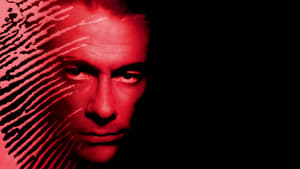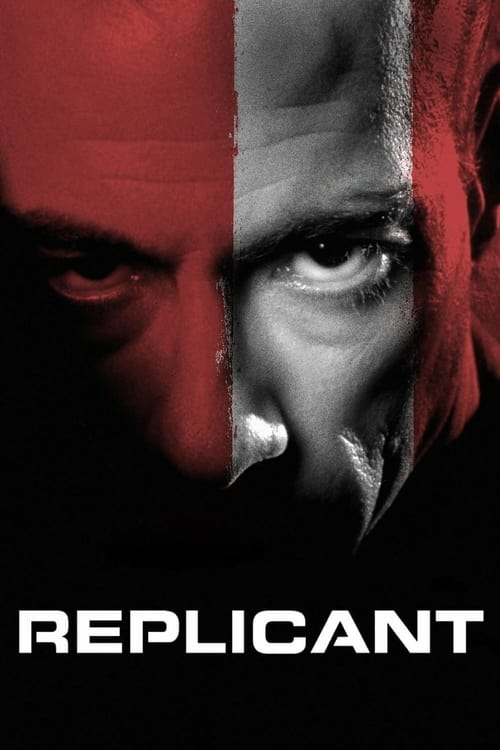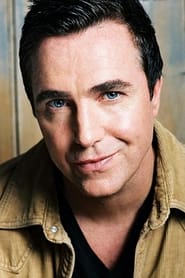Cast
View AllMichael Rooker
as Jake
Jean-Claude Van Damme
as Replicant / Garrotte
Ian Robison
as Reisman
Catherine Dent
as Angie
Paul McGillion
as Captain
Pam Hyatt
as Mrs. Riley
Margaret Ryan
as Gwendolyn
James Hutson
as Snotty Concierge
Brandon James Olson
as Danny
Peter Flemming
as Paul
Lillian Carlson
as Nurse
Marnie Alton
as Hooker
April Telek
as Downtown Mother Victim
Ingrid Tesch
as 911 Operator
Jayme Knox
as Wendy Wyckham
Crew
Director
- Ringo Lam Ling-Tung
Producer
- John Thompson
- Richard G. Murphy
- David Dadon
- Danny Lerner
- Tani Cohen
Reviews
John Chard
Double Trouble for Van Damme again!
Yet another Jean-Claude Van Damme film that sees him tasked with playing two characters. In spite of its shaky reputation this isn’t half bad, it delivers what most Van Damme fans expect, namely bonkers fights and shifty science. Plot has Van Damme as a fire obsessed serial killer who is always one step ahead of the police. Enter science as a chance to clone the killer arises and this sets in motion the wheels of the Van Damme clone trying to come to terms with his alien world as he, and world weary police officer Jake Riley (Michael Rooker), set about capturing the unhinged mad man.
It’s of course daft but it’s a whole bunch of fun, and with the strong presence of Rooker supplemented by two very interesting performances by Van Damme, pic is in good hands. The fight scenes are smoothly choreographed and exciting, with director Ringo Lam clearly aware of what makes a Van Damme movie work. It’s not prime Van Damme, but it’s above average and well worth checking out for those so inclined. 6/10
Feb 12, 2015
tmdb28039023
Jean-Claude Van Damme does the Italian neorealists one better; not only was he born to play himself, but also his twin — here, however, he mixes it up a bit, playing his clone instead.
JCVD is Edward 'The Torch' Garrotte, a serial killer who likes to burn the corpses of the women he murders (why they gave him that last name but don’t have him use an actual garrotte, I haven’t the foggiest), whom Detective Jake Riley (Michael Rooker) has unsuccessfully pursued for the past three years — up to and including his last day on the force before retiring to apparently take up boat repairing.
It turns out to be a 10 Minute Retirement; a secret government agency has cloned Garrotte from DNA found at a crime scene, and needs Jake's help to babysit the clone while he tracks down the killer — except they don’t call it a clone, but a "replicant". The difference between one and the other is never satisfactorily explained, but as far as I can tell, it takes at least a week for a replicant to be up and about ("God created man in six days, we took longer;" actually, God created man on the sixth day, not in six days. No wonder it took your ignorant asses longer).
Additionally, while a clone has to grow and mature, a replicant comes out fully formed (complete, if my eyes don’t deceive me, with a navel), just like Pallas Athena from Zeus’ forehead — but then this is business as usual for clones in the movies, so I don't understand why this one feels the need to make a point out of its not being a clone.
Unless, of course, director Ringo Lam deliberately wants us to think of Blade Runner (it's never a good idea to remind the audience that they could be watching a much better film; only instead of seeing "attack ships blazing from Orion's shoulder" and "C-beams glowing in the dark near the Tannhäuser Gate,” JCVD eats dog food and falls in love with a whore.
What’s certain is that the Replicant has the same muscular build as Garrotte; now, since a physique like JCVD's usually requires spending a lot in a gym — and time and a gym are two things that the Replicant lacks — I have no choice but to assume that Garrotte was born, like the baby in Meet the Spartans, with built-in muscles, a characteristic that his clone inherited (along with the uncontrollable desire to do splits).
How do its creators intend for the Replicant to find Garrotte? “Well, we've augmented his telepathic ability by re-sequencing his genetic code from the genome. It may be our first, but genetic memory has been scientifically proven" — as has, I guess, telepathy, which is not the same thing; genetic memory would allow an individual to 'remember' something that they never learned (music, math), but the Replicator can recall specific actions performed by Garrotte.
Anyway, the idea is for the Replicant to experience some sort of Proustian Madeleine moment, and it's Jake's job — who presumably knows Garotte as well as Steve Carell knows Proust in Little Miss Sunshine — to jog his memory.
The rest is a disastrous hybrid of 48 Hrs. and Rain Man — the Replicant is basically a kid trapped in the body of a Belgian karate fighter (although come to think of it, so is the real JCVD) — that is neither good science fiction (the science, such as it is, being rather nebulous) nor good chopsocky (a character fighting himself invariably results in awkwardly choreographed action sequences). Then again, this movie was doomed they cast Michael 'Henry Lee Lucas' Rooker as the detective as opposed to the serial killer.
Sep 4, 2022
Thematic Analysis
This high-octane Action/Science Fiction/Thriller film balances spectacular sequences with character-driven moments. Unlike many films in the genre, Replicant distinguishes itself through a unique visual style and creative action choreography.
Director Ringo Lam Ling-Tung brings their distinctive visual style to this film, continuing their exploration of themes seen in their previous works while adding new elements. Their approach to pacing and visual storytelling creates a viewing experience that rewards close attention.
Released in 2001, the film exists within a cultural context that continues to evolve with our understanding of its themes. Its reception demonstrates the diverse reactions to its artistic choices and its place in cinema history.
Did You Know?
- The production of Replicant took approximately 18 months from pre-production to final cut.
- With a budget of $17.0 million, the film represented a significant investment in bringing this story to the screen.
- The final cut of the film runs for 100 minutes, though the director's initial assembly was reportedly 133 minutes long.
- The cast underwent specialized training for 3 weeks before filming began.
- The film contains approximately 1937 individual shots.
- Some visual effects sequences took up to 5 months to complete.
Historical Context
- In 2001, when this film is released:
- Digital technology was disrupting traditional media and entertainment.
- Environmental concerns were becoming more mainstream.
- Digital filmmaking technologies were transforming production processes and creating new opportunities.
How This Film Stands Out
Details
- Release Date: May 11, 2001
- Runtime: 1h 40m
- Budget: $17,000,000
- Revenue: $894,844
Where to Watch














